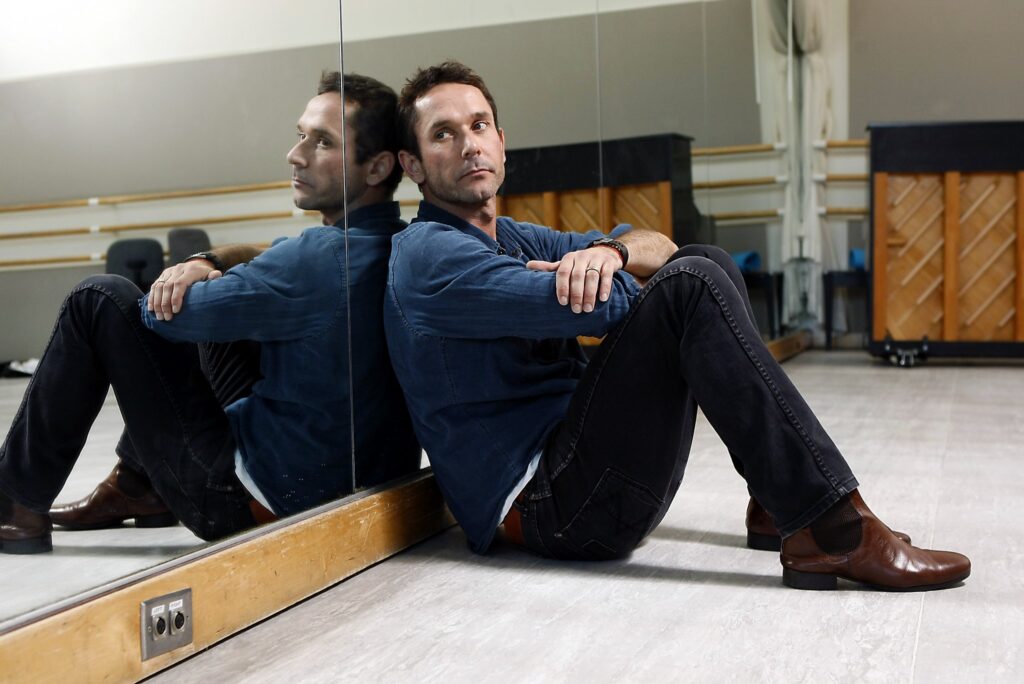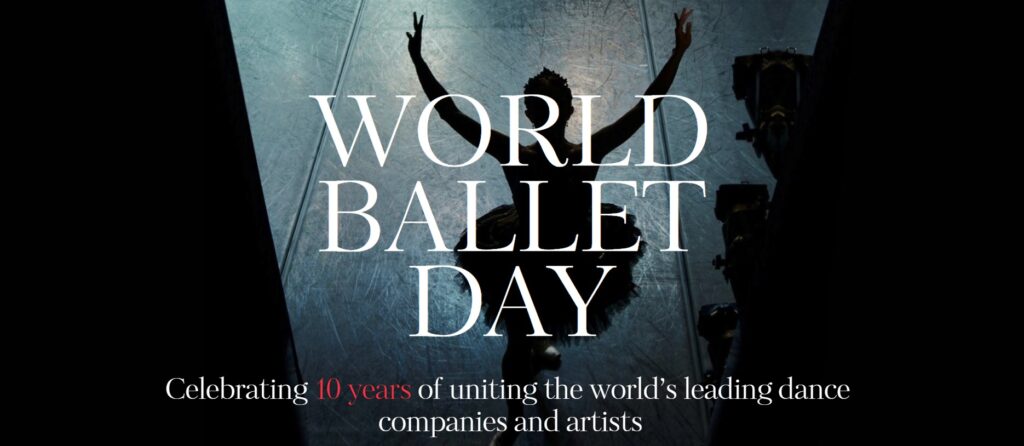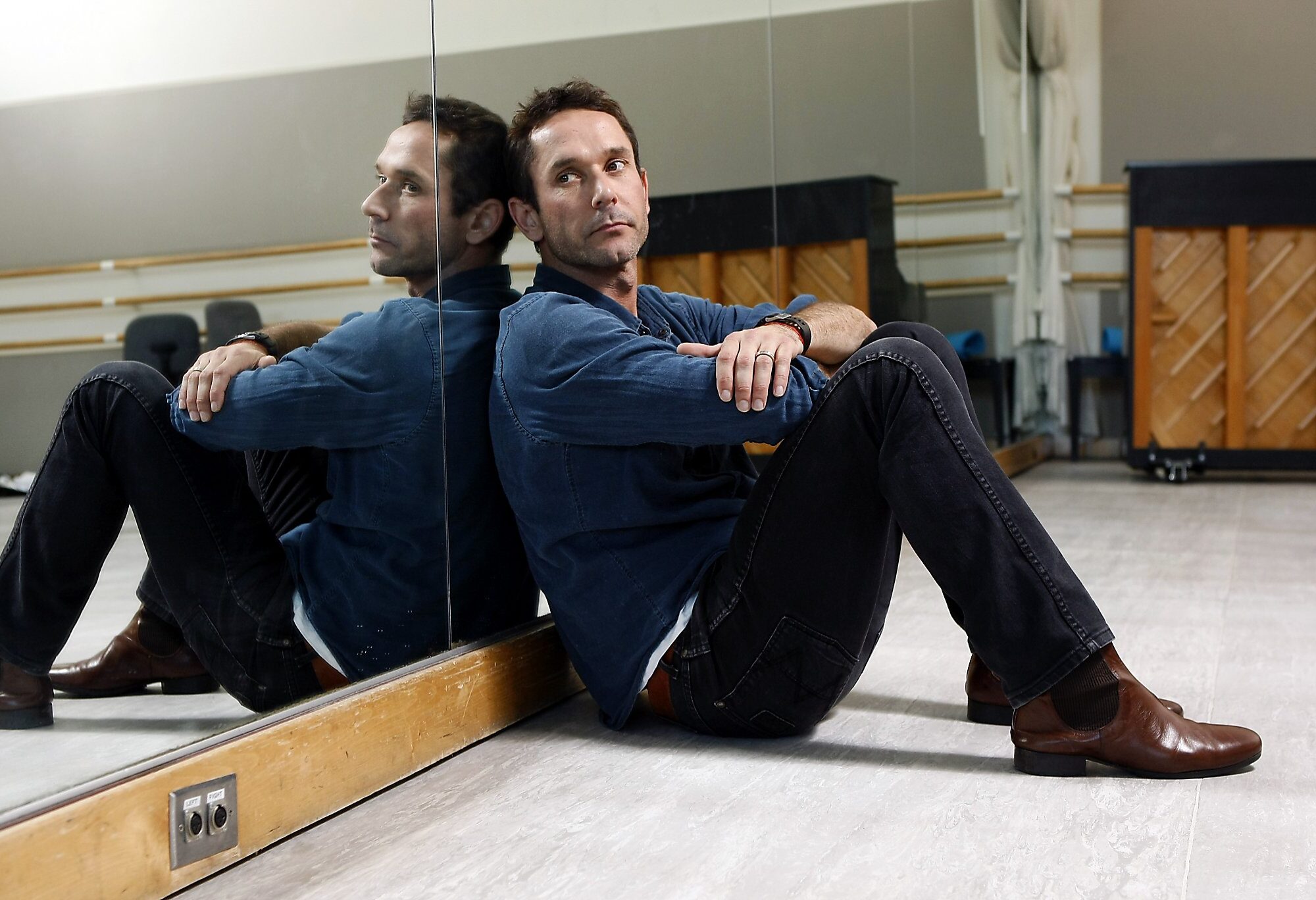In the world of ballet, Damian Smith stands as a luminary figure, a testament to the power of dedication and passion. With a career spanning over a quarter-century, he has graced stages around the globe, with renowned companies like the Boston Ballet, Dutch National Ballet, and the San Francisco Ballet, where he spent an illustrious 18 years as Principal Dancer.
The journey that led Damian to these grand stages was no less than extraordinary. Hailing from a working-class background in Newcastle, Australia, his early steps into the world of ballet were met with skepticism and taunts. However, for Damian, ballet wasn’t just a pursuit—it was a calling that ignited a fire within him.
In this interview, Damian reflects on his remarkable career, connecting to his Indigenous heritage and the transition from performing to mentoring. He offers insights into the challenges faced and the wisdom gained, imparting a message of resilience and an unwavering belief in the potential of one’s dreams.
Ausdance VIC: I’m trying to imagine being in your shoes, growing up as a working-class kid in Newcastle, with five siblings and wanting to be a ballet dancer. The first word that pops into my mind is “difficult”. Was it a difficult start to what has been an illustrious career?
Damian Smith: I was certainly teased and harassed for doing ballet. And kids at school would make fun of me. But a lot of kids can be really cruel, and I witnessed others being teased about other things much worse. In some ways, the teasing only motivated me to keep going and gave me a thicker skin which I would eventually need once introduced into the profession anyway. A preconditioning, if you will.
When I discovered ballet, I felt like the first nine years of my life didn’t really matter much, I was just going along and growing and surviving. But then ballet gave me meaning, and I couldn’t think of anything else. I had focus, discipline, structure and motivation. And this new whole of beauty, music, lights, costumes and physical discipline and I couldn’t get enough of it. So in comparison, the tease felt mild compared to the passion that was burning inside me to want to dance. I didn’t really care what others thought because something inside me knew this was special and there was never any doubt this was what I was going to do.
When other children would pick on me, I would say: “You just wait, I’ll be travelling the world one day and getting paid to do what I love.” Also having three older brothers who everyone knew helped a lot. No one was going to mess with me.

Ausdance VIC: All your biographies online mention that you’re of Indigenous heritage, I am thinking this wasn’t an issue for you while you were working overseas, but you came back to a very different Australia than the one you left as a raw 16-year-old talent. Are you more aware of your Aboriginal lineage now than perhaps you were as a callow youth?
Damian Smith: Absolutely, I didn’t really invest much time in learning about my indigenous heritage as a child. My Aboriginal father Walter Roy Smith passed away when I was only two years old, and my Caucasian Mother Barbara Anne Smith did an incredible job bringing up my siblings as a single parent. May they both rest in peace.
I have relatives who certainly influenced me a little as a child but once I was nine and in the ballet studio I never looked back until returning to Australia six years ago. I have an amazing family here from siblings, brothers and sisters-in-law, nieces and nephews and relatives. They are so supportive and loving. We often get together when possible for family reunions and there are so many of us, that each family is delegated a colour to wear so we know who belongs to whom. In those days there was a stigma surrounding being aboriginal.
Ausdance VIC: The traditions of ballet are a long way from the traditions of song lines, corroboree and ceremonial dance in the First Nations context. Do you ever try to reconcile these things for yourself?
Damian Smith: Absolutely, I feel a sense of responsibility to connect my passion and my craft to my heritage. I’ve created a short dance film with elements, symbols and concepts drawn from my Aboriginality and merged with my classically trained technique, this creates a unique and beautiful marriage and collaboration between the two. There are so many beautiful aspects of the Indigenous traditions, beliefs, stories, and respect for the earth and environment. Exploring those qualities, I really enjoy incorporating them into the realm of ballet and today’s more contemporary style. I still have a lot to learn about my heritage and the more I learn the more respect I have for my heritage and my ancestors. And the more gratitude I feel to be an Indigenous man in this country. I feel that maybe my story can educate others and hopefully inspire others and show them anything is possible if you go after it. If you have a dream, wake up and go after it. It can become your reality.
I was so fortunate to have those people in my life at a young age who believed in me and supported me financially to pursue my dream and the very least I can do is to pay it forward as much as I can. This is why I created the Arrellah Scholarship at The National Ballet School, which is full tuition for a young indigenous dancer who shows promise in pursuing their dance training and wishes to make a life for themselves in the dance industry.
I think that’s also a part of one’s responsibility, in every aspect of life, if someone does something nice for you, it’s not just to be nice to you but to demonstrate and show you the positive aspect and feeling that comes with it and hope you do the same in return to another. If we call or do one nice thing for someone else for no reason or without expecting anything in return once a day, can you imagine the impact that would have on the world and how simple it would be.

Ausdance VIC: You retired in 2016, so you’ve had six years or so to settle back into Australia. Do you miss performing, the footlights and the excitement of opening night?
Damian Smith: I miss everything about it. The smell of makeup, the sound of the orchestra tuning before the show, the hustle and bustle backstage getting ready, working with amazingly creative people and talented choreographers, designers and dancers. I miss the time spent in the studio working with a respectable choreographer who is challenging you and, in a few weeks, you walk out a completely different person and artist from the experience. I miss touring and seeing the world, dancing on incredible stages like the Odeon of Herod Atticus Theatre, Covent Garden, Bolshoi Theatre, Lincoln Centre and many more. It was a wonderful time and to be doing what I love was an incredible opportunity and gift.
Ausdance VIC: Since retiring from the stage you’ve transitioned into being a teacher, Artistic Director at The National Ballet School, and mentor to young dancers. What was the easiest part of the transition and the hardest?
Damian Smith: In some ways, it was very difficult and some not so difficult.
Some of the easier areas of transition for me have been the physical pain and not having to panic about what to do to fix it. These days when my foot or hips are hurting, I think, oh well, I’m not performing tonight. I don’t miss the stress of pain. The hardest part was no longer having that structured routine and the exciting anticipation of performing.
I miss that feeling of exhaustion after a hard performance when you can’t even stand in the shower but must sit and just let the water run over you. And that feeling of your first cold beer after a shower, and you actually get a little tipsy from just one beer.
It’s difficult losing something you have dedicated your entire life to, something that becomes your identity and your purpose and daily ritual. For me, dancing is the most incredible occupation and I loved it more than anything. That makes it that much more painful having to step away from it. I’d do it all again though.
Probably the thing I miss most about being a professional dancer is the connection with your partner on stage when you are so in synch and create a magical performance together. That moment you’re in the zone and everything around you washes away and you just dance. That circular motion that ripples through your body when executing beautiful choreography to the most incredible live orchestra and the energy filling the stage from the 3000-5000 people watching, is exuberating. There’s nothing like it. Then the audience applauds, and you snap out of it.
Ausdance VIC: I’ve often thought ballet is an odd genre, it is a demanding discipline that requires youth, flexibility, stamina, strength, and complexity, but it has a reputation as being an artform for stuffy and wealthy patrons. Is a more contemporary approach to ballet – perhaps more abstract and movement-driven rather than narrative – shifting that perspective?
Damian Smith: Certainly! Contemporary ballet has indeed played a crucial role in shifting the traditional perspective of ballet. By moving away from the conventional narrative-driven approach, a more abstract and movement-driven style has taken the forefront.
This evolution has opened new possibilities for artistic expression within the ballet genre, attracting a wider audience beyond the traditional, stuffy image. With a focus on exploring the physicality of movement, contemporary ballet embraces innovation and experimentation. It pushes boundaries, combining classical ballet techniques with various dance styles, interdisciplinary collaborations, and even incorporating elements of modern technology.
Contemporary ballet has also paved the way for greater inclusivity and diversity within the ballet community. By breaking away from old conventions, it welcomes dancers with different body types, backgrounds, and training styles. This shift has allowed for a more dynamic and authentic representation of humanity on stage, resonating with a wider range of viewers. Moreover, this contemporary approach has extended beyond traditional stages and embraced site-specific performances, immersive experiences, and digital platforms. By reaching out to non-traditional spaces and utilising modern technology, contemporary ballet has found innovative ways to connect with audiences worldwide, breaking down the barriers of location and elitism.
Ausdance VIC: Finally, you are quoted as once saying “It’s only ballet.” Is it really?
Damian Smith: Depending on what context. But I believe what I was referring to was, you can’t always take yourself so seriously. Sometimes you must be able to just laugh it off or see the humour. But when things seem tragically devastating or something has gone horribly wrong, stop, step back and look at the big picture, and you can see, it’s only ballet. It’s not a war, or a death sentence or the end of the planet on which we live. It’s just ballet. This statement also helped when I was very nervous before a major role opening night performance.
I used to also tell myself: “What’s the worst thing that could happen during the live performance? I fall over? Yes. And then what? Get up and keep going? And then what? Move on.”
I tell my students: “We don’t want to make mistakes but when we do, and we all will, it’s how we recover from them that is important.”
Hopefully, we can learn from our mistakes.
November 1st 2023 is the 10 year anniversary of World Ballet Day. Step beyond the curtain and discover more with special live streaming events from the world’s leading dance companies and artists.
Explore the World Ballet Day schedule >>

